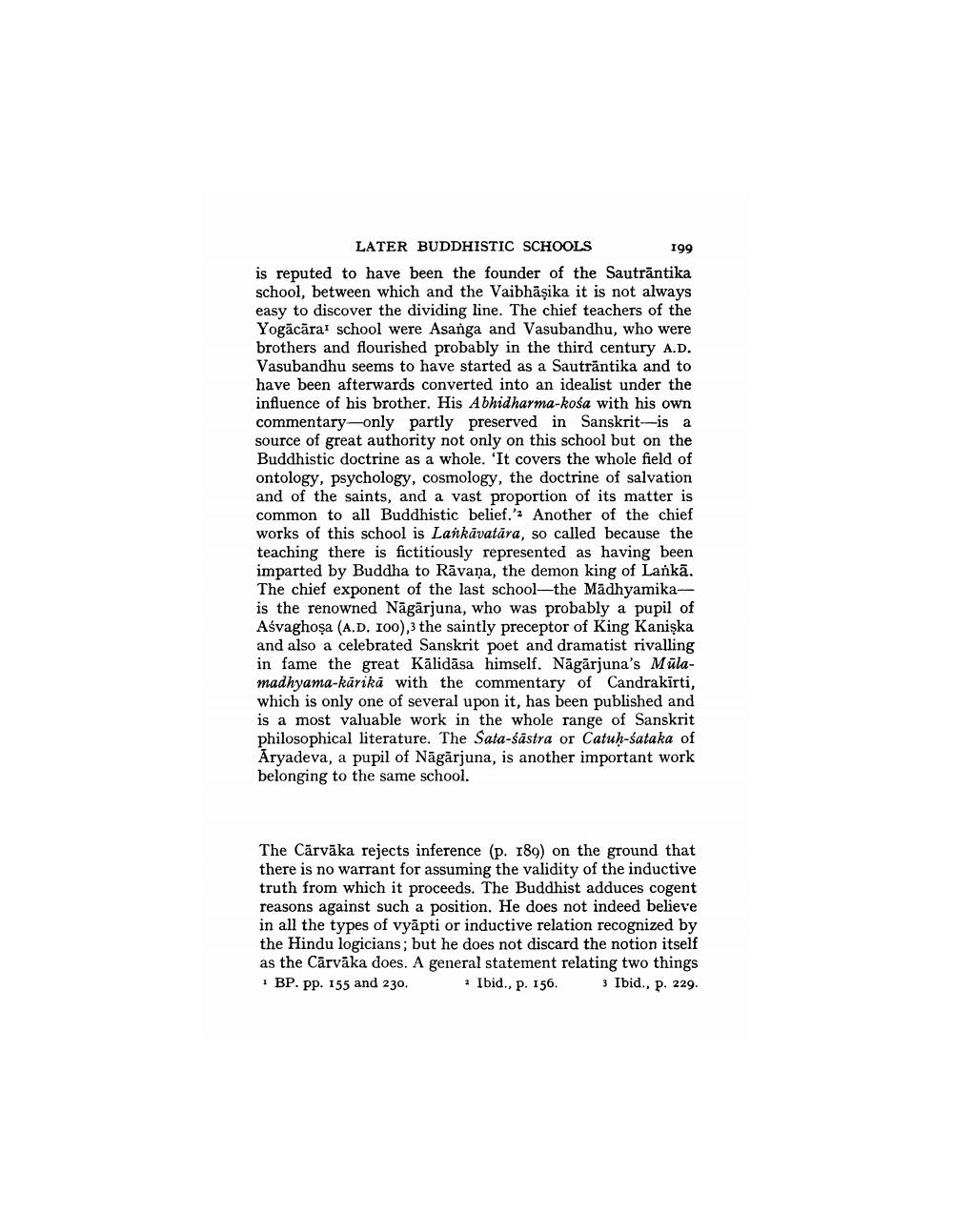________________
LATER BUDDHISTIC SCHOOLS
199 is reputed to have been the founder of the Sautrāntika school, between which and the Vaibhāşika it is not always easy to discover the dividing line. The chief teachers of the Yogācāra' school were Asanga and Vasubandhu, who were brothers and flourished probably in the third century A.D. Vasubandhu seems to have started as a Sauträntika and to have been afterwards converted into an idealist under the influence of his brother. His Abhidharma-kośa with his own commentary-only partly preserved in Sanskritis a source of great authority not only on this school but on the Buddhistic doctrine as a whole. 'It covers the whole field of ontology, psychology, cosmology, the doctrine of salvation and of the saints, and a vast proportion of its matter is common to all Buddhistic belief.' Another of the chief works of this school is Lankavatāra, so called because the teaching there is fictitiously represented as having been imparted by Buddha to Rāvana, the demon king of Lankā. The chief exponent of the last school—the Madhyamikais the renowned Nāgārjuna, who was probably a pupil of Ašvaghosa (A.D. 100),3 the saintly preceptor of King Kaniska and also a celebrated Sanskrit poet and dramatist rivalling in fame the great Kālidāsa himself. Nāgārjuna's Mülamadhyama-kārikā with the commentary of Candrakirti, which is only one of several upon it, has been published and is a most valuable work in the whole range of Sanskrit philosophical literature. The Sata-śästra or Catuh-sataka of Aryadeva, a pupil of Nāgārjuna, is another important work belonging to the same school.
The Cārvāka rejects inference (p. 189) on the ground that there is no warrant for assuming the validity of the inductive truth from which it proceeds. The Buddhist adduces cogent reasons against such a position. He does not indeed believe in all the types of vyāpti or inductive relation recognized by the Hindu logicians; but he does not discard the notion itself as the Cārvāka does. A general statement relating two things
BP. Pp. 155 and 230. * Ibid., p. 156. 3 Ibid., p. 229.




